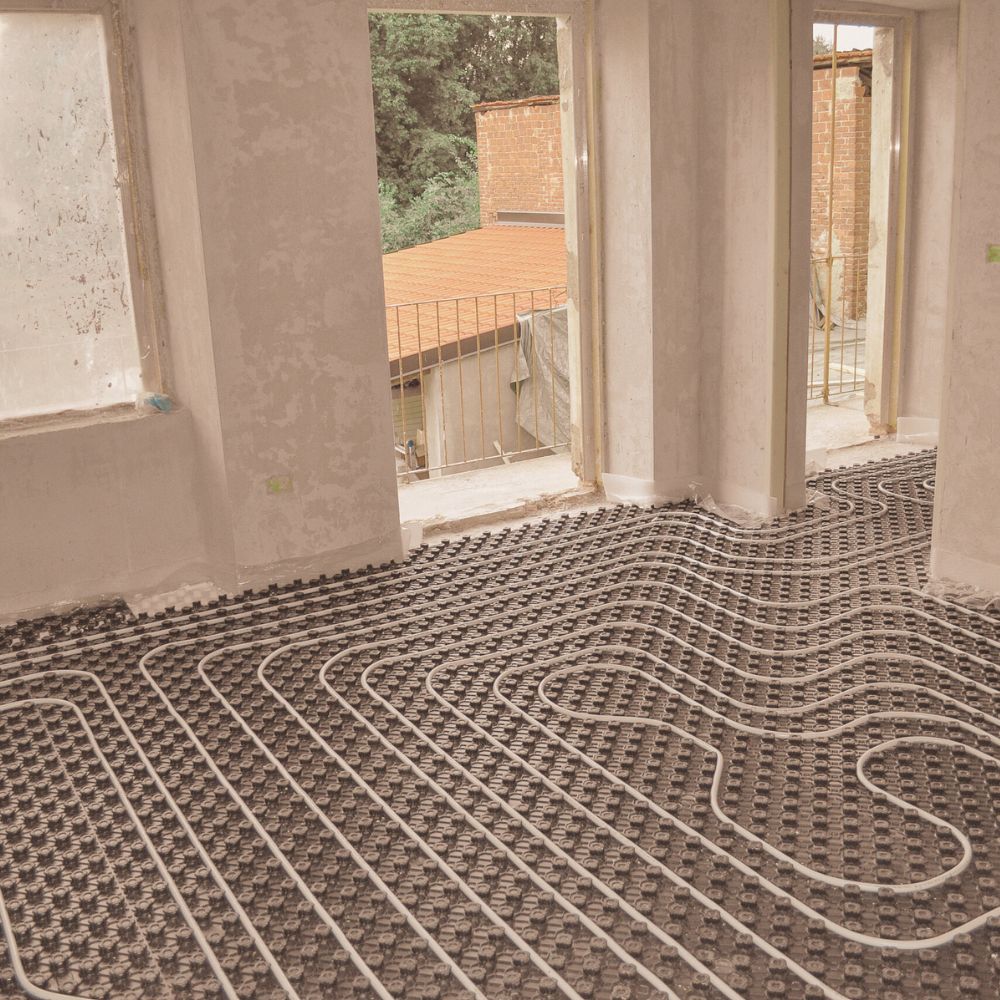WATER & ELECTRIC
Underfloor Heating

An Introduction to Underfloor Heating
Underfloor heating warms a home via durable, flexible tubes laid beneath the floor. It's both efficient and cost-effective, providing several benefits over traditional radiators.
The ideal underfloor heating system for you hinges on several considerations, such as the nature of your project, your existing heating setup, and your primary energy source.
- Compatible with most homes.
- Enhances energy efficiency.
- Frees up room space.
- Offers the comfort of warm floors.
- Allows precise temperature control across different areas of the home.
How Underfloor Heating Works
Underfloor heating transforms the floor into a large, efficient, unseen heat source. It operates with heating tubes or cables beneath the floor that warm up, radiating heat upwards. Warm water systems use durable, flexible tubing, whereas electric variants employ cables.
Its coverage across a vast surface area allows for lower water temperatures than radiators, enhancing efficiency, particularly when paired with a heat pump. This method also evenly distributes heat, eliminating cold spots in the room.


Underfloor Heating or Radiators?
While radiators have traditionally dominated home heating choices, they might not be the most efficient option available.
A typical UK household using radiator heating produces approximately 2,745kg of CO2 annually. In contrast, a water-based underfloor heating system can operate with about 25% greater efficiency, reducing CO2 emissions to just 686kg per year.
We are proud to be registered Nu-Heat Installers offering high quality Underfloor Heating
Underfloor Heating FAQs


